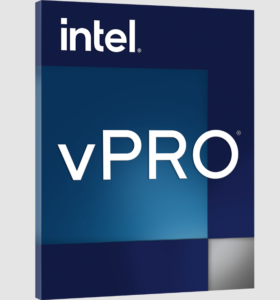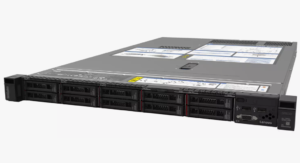
When managing a large network, one of the most important factors is ensuring smooth operation, easy control, and quick fixes.
Servers offer a centralized management solution, allowing you to handle and oversee various devices and services from one place.
Do you struggle with managing different components of your network?
Servers can simplify these processes, providing better organization, security, and efficiency.
Complementing the importance of servers, one of the reports mentions:
The global server market is projected to experience significant growth at a compound annual growth rate (CAGR) of 11.71% from 2025 to 2029.
In this article, we’ll discuss why servers are the best choice for centralized management in large networks.
1. What is Centralized Management?
Centralized management means you can control all your network systems from one place, usually a server, such as a 1U rack server. Instead of managing devices individually, everything connects to this central system, allowing you to monitor, update, and maintain your network with ease.
For large networks, this approach reduces complexity and improves control, letting you manage tasks across multiple systems without being physically present at each one.
Benefits of Centralized Management
- Reduces the risk of human error
- Simplifies network monitoring
- Increases security with a single point of access
- Makes software updates easier and faster
- Saves time by automating tasks
2. Easier Network Monitoring
Managing a large network requires constant monitoring to ensure everything is running smoothly. Servers allow network administrators to keep track of performance and security issues in real-time from a single dashboard. Monitoring large networks manually would be chaotic and inefficient, but a server system makes this process seamless.
Reduced Complexity
- A server provides an easy way to track network traffic, bandwidth usage, and connected devices, making it easier for administrators to spot any potential issues.
Real-Time Alerts
- You can set up alerts for unusual activity, ensuring that security breaches or performance issues are addressed immediately.
Troubleshooting Made Simple
- When there is an issue in the network, a server helps quickly identify the cause and resolve it before it impacts other parts of the network.
3. Enhanced Security Control
Security is one of the most crucial concerns in a large network, and centralized management via a server offers significant advantages. With server-based management, you can apply security policies to every device in the network without individual configurations, making the process efficient and enhancing security.
- Consistent Security Policies: Servers allow you to apply the same security settings across all connected devices, ensuring that each one is protected in the same way.
- Automatic Security Updates: Servers help automate the process of security patching and updates, reducing the chance of vulnerabilities in the system.
- Access Control: With centralized management, you can restrict access to sensitive data and systems, keeping unauthorized users out.
- Centralized Backup: Servers back up data from all connected devices in one place, helping recover quickly from any data loss or security breach.
- Real-Time Monitoring: Servers provide real-time monitoring of security threats, so you can immediately address any issues as they arise.
4. Streamlined Software and Hardware Management
In a large network, managing both software and hardware can be challenging. A 1U server simplifies these tasks by centralizing control, making it easier to update software and troubleshoot hardware issues. This approach saves time and effort while improving efficiency.
Simplified Software Installation
Instead of installing software on each individual device, you can deploy it to all systems through the server, reducing manual work and ensuring consistency across your network.
Hardware Control
Servers help you monitor hardware health, and they can alert you if something needs attention, such as low disk space or failing hardware components.
Configuration and Maintenance
You can configure and maintain devices from one location, ensuring that all machines are set up correctly and running the latest updates.
5. Efficient Resource Management
Managing resources like storage, bandwidth, and processing power across a large network is a daunting task. Servers help by allocating and managing these resources centrally. With a server, you can ensure that all resources are used efficiently, avoiding waste and maintaining system performance.
- Centralized Storage: With a server, data is stored centrally, making it easier to manage and retrieve when needed.
- Optimized Bandwidth Use: A server helps optimize how bandwidth is allocated, preventing any device from using more bandwidth than necessary.
- Resource Scaling: Servers allow you to scale resources up or down based on demand, ensuring efficient resource use.
- Cost Savings: By optimizing resource allocation, you avoid unnecessary purchases and reduce operational costs.
- Improved System Performance: Efficient resource management means your network runs more smoothly, with fewer slowdowns and performance issues.
Conclusion
Servers, like the 1U rack server, offer centralized management that simplifies network administration, enhances security, and improves overall system efficiency. For large networks, this approach ensures all devices are monitored, updated, and managed from a single location.
Whether it’s managing security, monitoring performance, or allocating resources, servers are key to handling these tasks efficiently.
Centralized management helps save time, reduce risks, and improve network operations.
Read More: What Will the Future of Enterprise Servers Look Like






